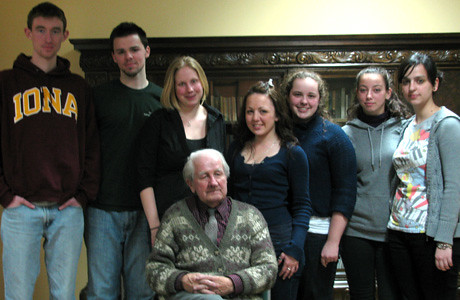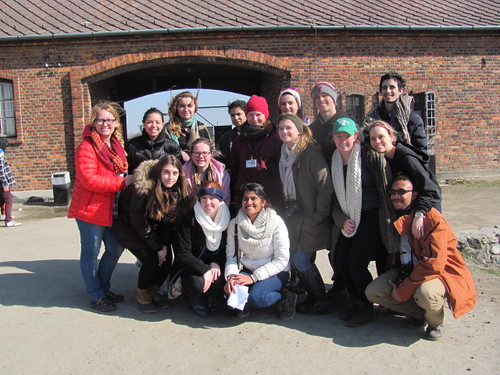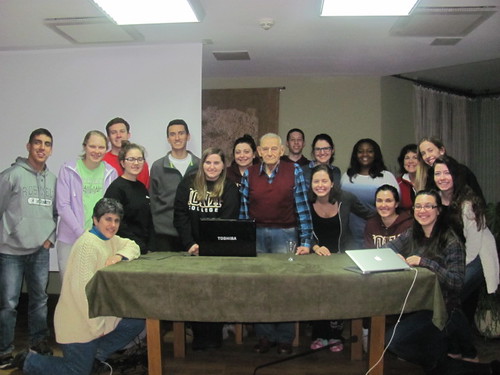 |
| Memorial at Auschwitz II Birkenau |
Reflecting
on my week in Poland leaves me feeling conflicted. I’ve been told that this
trip normally takes an emotional toll on those who undertake it. Yet for me, I
was able to remain detached from the emotional weight of the subjects we
explored as a class. This reaction is not a surprise to me; I knew going into
the trip that it would not affect me in the way I was warned about. My
conflicted feeling comes from the fact that some of my peers have expressed
their personal struggle with working through the emotions that come from being
immersed in Holocaust studies.
This
does make me wonder sometimes why I do not connect to the reality of what
occurred like so many other people do. I will probably always feel some
undercurrent of conflict because of this. However, I don’t think experiencing
emotional detachment from a historical event even as tragic and permanently
affecting as the Holocaust should be assigned a negative connotation.
After
speaking with a number of my peers who studied abroad with me, I came to
realize that I am not alone in my reaction. A few of us processed our
experience as strictly a learning endeavor and felt some type of uncomfortable
expectation to be more emotional. No one actually expressed this expectation to
us; I want to be clear about that. It was more of a nonexistent expectation
that we formed of ourselves based on anecdotal accounts we’d heard and being
repeatedly warned about the potential to be unexpectedly emotional. When
traveling abroad to study at Auschwitz, you’ll find that nearly everyone you
tell will express some form of this warning.
 |
| A lake at Auschwitz II Birkenau where ashes of victims were laid |
This
night was the beginning of my interest in this issue of varying reactions to
Holocaust studies at Auschwitz. It’s something I’ve continued to think about
since returning from Poland, prompting me to eventually write this blog post.
My
hope is that any students embarking on this amazing trip in the future who read
this will know that there is no shame in one’s reaction to an experience as
complex as this. Whether you feel a storm of emotions that refuses to set your
mind free, or simply a tame curiosity in the factual details of the Holocaust’s
history, embrace your reaction as a manifestation of your own mind’s ability to
process difficult confrontations with human nature and history, and learn
something new about yourself.
By Michael Coppola


























